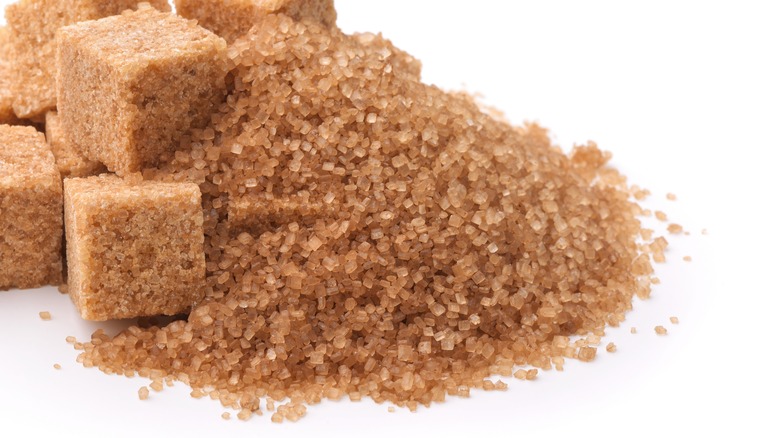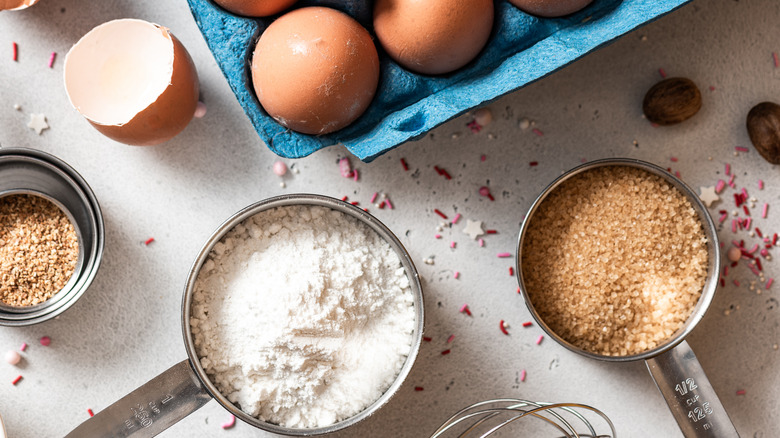Dark Brown Sugar Vs. Light: What's The Difference?
You know the moment. You wake up with a hankering for cookies, and you decide that today is going to be a baking day. Maybe you're craving chocolate chunk cookies or the perfect crispy brownies. Maybe you decide that cookies really won't satisfy the craving and it's time to make some decadent red velvet cupcakes instead. You get out your favorite recipe and open the pantry, but lo and behold, your recipe calls for light brown sugar and alas, you have only dark brown sugar.
According to Healthline, brown sugar has a deep toffee and caramel-esqe flavor due to its molasses content and is actually less sweet than white sugar. Recipes often call for both sugars, as the white is used to sweeten while the brown us used to deepen the flavor (per Medical News Today). But what are the differences between light brown sugar and dark brown sugar when baking? And can you use them interchangeably?
Subtle differences
White granulated sugar is sugar that has been processed to remove the natural molasses from it. Brown sugar, on the other hand, is sugar that is processed to allow its natural molasses to remain in the mix, per Healthline. While light brown sugar has less molasses than dark brown sugar does, they are pretty dang similar.
According to Imperial Sugar, dark brown sugar's higher molasses content gives it a bit of a stronger flavor and a bit more acidity and moisture content. For this reason, dark brown sugar can alter the chemistry of baked goods just slightly. For example, a batch of cookies baked with dark brown sugar might rise a bit higher and have a more caramel-dense flavor. But the differences truly aren't enough to ruin a recipe.
It comes down to taste and personal preference, so if you prefer light brown sugar, buy and bake with that. If you're a dark brown sugar person, enjoy its extra bit of zing!

